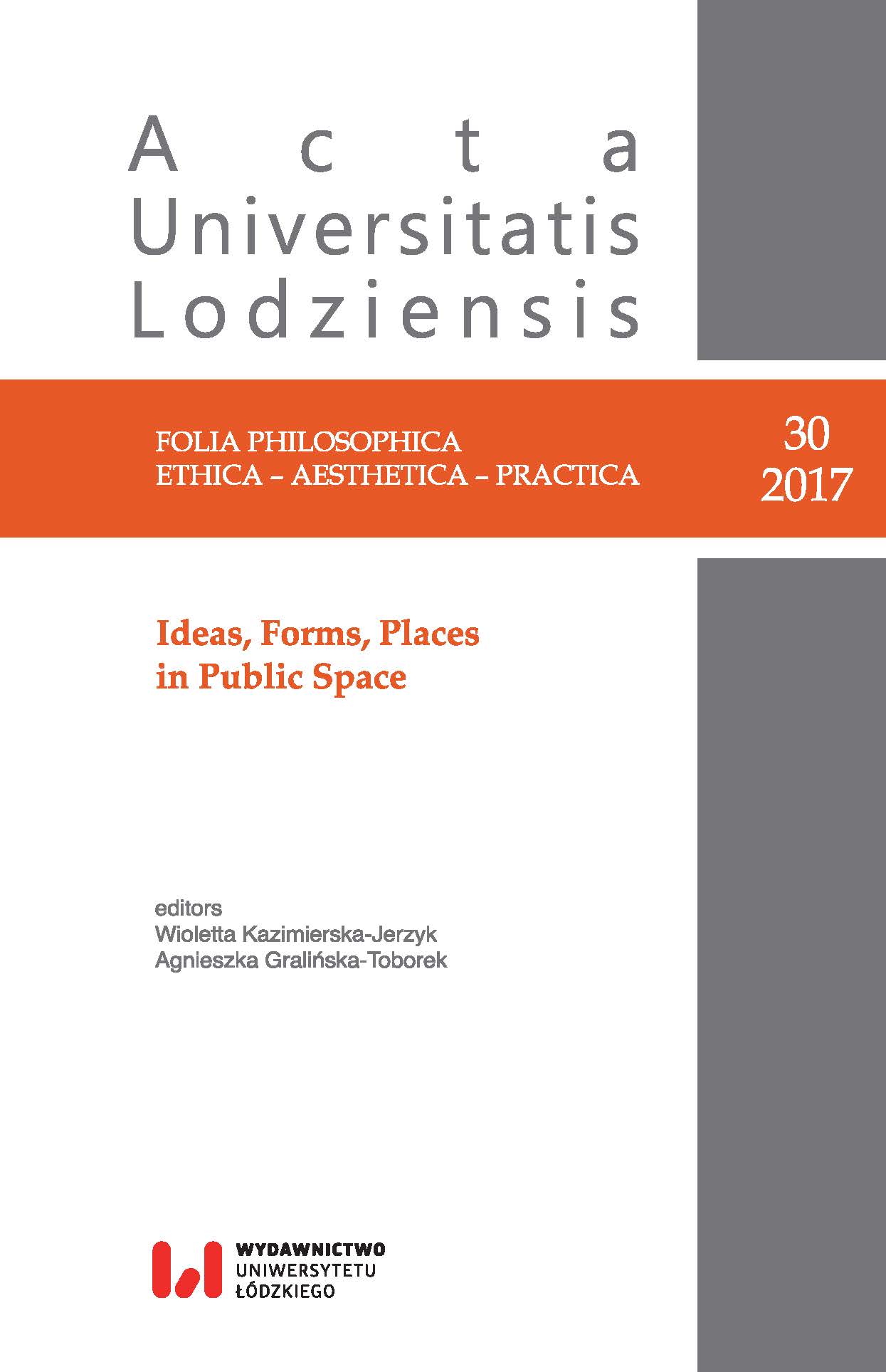Does the Artist Need to Be Present? The “Paradigm of Visibility” and Art Practices in Public Space
DOI:
https://doi.org/10.18778/0208-6107.30.08Słowa kluczowe:
Marina Abramović, visibility, public space, artworldAbstrakt
The thesis of my paper is that art participatory practices in public space have a paradoxical potential to avoid a paradigm of visibility. What I call the paradigm of visibility is a formula of social presence of art which is based on a necessity of occupying a certain physical or symbolical space and an effort to sustain it. This kind of public presence of art is traditionally considered to be a guarantee of its value in terms of both artistic and social legitimisation. A question arises if this formula has an alternative. It seems that participatory art practices in public space – focused on production of objects and searching for social impact and social efficacy – can formulate a different model of presence of art (of its production and distribution) than object-based art.
Bibliografia
Ardenne, Paul. Un art contextuel. Paris: Flammarion 2002.
Google Scholar
Bishop, Claire. Artificial Hells. Participatory Art and the Politics of Spectatorship. London: Verso 2012.
Google Scholar
Bordewijk, Jan L. and Kaam Ben van. Allocutie, enkele gedachten over communicatievrijheid in een bekabeld land. Baarn: Bosh & Keuning 1982.
Google Scholar
Bourdieu, Pierre. The Rules of Art. Genesis and Structure of the Literary Field. Translated by Susan Emanuel. Stanford: Stanford University Press. 1996.
Google Scholar
Dickie, George. Aesthetics. An Introduction. Winnipeg: Pegasus Publications 1971.
Google Scholar
Dijk, Jan van. The Network Society. Social Aspects of New Media. London: Sage 2006.
Google Scholar
Gray, Rosie. “Pippin Barr, Man Behind the Marina Abramović Video Game, Weighs In On His Creation,” The Village Voice 16 September (2011), http://www.villagevoice.com/news/pippin-barr-man-behind-the-marina-abramovic-video-game-weighs-in-on-his-creation-6711775 accessed: 11 November 2016.
Google Scholar
Pobrania
Opublikowane
Jak cytować
Numer
Dział
Licencja

Utwór dostępny jest na licencji Creative Commons Uznanie autorstwa – Użycie niekomercyjne – Bez utworów zależnych 4.0 Międzynarodowe.












